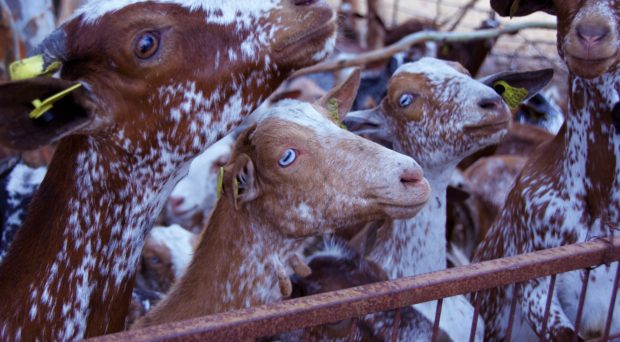
Did you know that eye coloration only varies in human populations and their domestic animals? Wild animal species, with few exceptions, have just one type of eye coloration, be it light or dark. By the way, when we say eye color, we refer to the iris encircling the pupil, which is always dark and expands and contracts rapidly depending on light conditions.
In the case of humans, it is common knowledge that the eye color palette is remarkably large. What is not known, however, is how and when this variation emerged in the evolutionary history of Homo sapiens. And the same can be said for domestic animals, both of feather and fur. There are blue-eyed dogs, cats, horses, goats, camels and llamas. And some of these species also have yellow-eyed variants.

Cat breeds in particular show a remarkable variation in eye coloration. In a majority of domestic breeds, however, brown is the default color. As it should be expected for domestic animals under selective breeding, the emergence and fixation of variants in both coat or plumage, as well as eye coloration, started at the early stages of domestication in the Neolithic due to the cherry-picking of rare color mutants.
Curiously enough, eye color variants for humans may have also started very recently (about 8,000 years ago), concurrent with sedentarism and domestication of plants and animals, and only (or mainly) in Europe. As of today, eye color variation in humans may be described as continuous, with numerous shades from very light blues to very dark browns.

In wild animals, and also in the ancestors of domestic animals, eye coloration does not tend to vary. The few reported cases of eye color variation in wild species, mostly in birds, correspond to changes associated to maturation with age and some rare instances of sexual dimorphism (as with certain duck species such as the common pochard Aythia ferina).
Perhaps blue- and green-eyed individuals were preferred as mates and left more descendants spreading their eye color in the populations.
Bird species in which the adults have bright yellow or red eyes may have a darker, brownish color, in the juvenile phase. This seems to imply that certain color types require some time for the individual to accumulate the necessary pigments that provide the definitive coloration of the adult eye. Melanins, by the way, are responsible for the color differences in the eye color of humans: dark eye colors contain eumelanin and pheomelanin, green eyes contain mainly pheomelanin, and blue eyes contain practically no melanin. Today it is possible to get blue eyes with a surgical procedure that removes melanins from the iris. And the acquired color is permanent because the melanin is never replaced.
Sexual selection can be discarded as a driving force for eye color variation in domesticated species, and natural selection does not act on them as heavily as in the case of their wild ancestors. But, what is the case for humans? Maybe it is a case of sexual selection, after all. Perhaps blue- and green-eyed individuals were preferred as mates and left more descendants spreading their eye color in the populations.
In wild animals with no variation in eye color, it seems that this trait is adaptive and fixed by natural selection. It may well be that all Darwinian processes would be at work regarding eye colors: artificial selection in domestic animals, natural selection in wild animal species, and perhaps sexual selection when humans became farmers.
Dr Juan José Negro
Latest posts by Dr Juan José Negro (see all)
- Variability of eye coloration in humans and animals - 15th January 2018
Comments